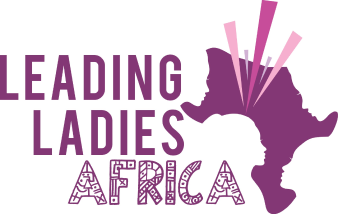
If you’ve found yourself in an emotionally abusive relationship, there is hope. You can find your way back to freedom and happiness, but you have to tread carefully and make sure you’re doing your research. Abusers — by their very nature — are volatile and unpredictable, making it critical to plan carefully before you draw the battle lines and take your power back again.
Step 1: Take your time.
Time is one of the biggest factors when it comes to emotional abuse, and one of the biggest facets of power when it comes to a one-sided and emotionally abusive partnership. Abusers want their partners to feel lost, scared and hopeless, and they achieve this by picking away at them over time. Take the time you need to wake up from the nightmare and regather your strength. Escaping from an abusive relationship is a long journey.
You have to remember that your life is your own. You can go where you want, when you want. You can be friends with the people you want to be friends with, and you can lead whatever type of life you want to lead. Take care of yourself and live life on your own terms. Your time is your own, so heal and get back to your happiness how and when you’re ready.
Step 2: Rework your boundary lines.
Boundaries are an essential part of a happy, healthy life. Our boundaries form the basis of our security in this chaotic world, and they’’e the primary means by which we protect ourselves from ne’er-do-wells and abusers who want nothing more than to take advantage of us in our weakest moments.
Your boundaries allow you to define your limits, and they also define the terms by which you interact with the world around you. If you’re struggling with someone manipulating your emotions, or pushing you around — rework your boundary lines (slowly) and make it clear where the line stands for you.
In order to set workable boundaries for yourself, you first have to recognize that your needs matter and second that they are your responsibility. Take your time and create enough space between you and your abuser that you can honestly assess your feelings and needs. Once you’ve got your requirements to hand, communicate those needs to your partner in a frank and honest conversation that makes it clear you have a right to respect.
Step 3: Learn how to forgive (yourself).
It doesn’t matter how you cut it, abusers are in the wrong 100% of the time. There is nothing that you did to deserve the way they treated you, and the sooner you realize that, the sooner you’ll be able to take back your power. Allow yourself to let go of the grief, guilt and shame and start forgiving yourself. You’re broken because they broke you, not the other way around.
Of all the things victims deny themselves — chief on the list is usually forgiveness. Forgiveness is absolutely necessary in order for you to heal, but it can be hard to see that beneath the insidious onslaught of negativity that comes from an emotionally abusive partner.
No matter what happens, abuse is never okay, and there is no justification for manipulation and conflict. It doesn’t matter who it is or what happened before or after. Emotional abuse is abuse and you are never at fault for the abuse someone inflicts on you. They are responsible for that on their own.
Step 4: Learn, Learn, Learn
Victims of emotional abuse often suffer confusion, caused by being forced to know and understand the world through their abuser’s perspective. They try to make sense of the abuse, but they can’t. Their brains have been rewired.
Therapy can be one powerful tool in combating the recovery that comes from abusive fallout. Therapists can help you get to the root of deeply buried issues and do so from the comfortable distance of an unbiased stranger. They can also teach you how to ease into the deep waters of emotional trauma, and teach you how to take breaks when you need to; coming back to things when you’re more efficiently able to deal with them.
If therapy isn’t something you’re comfortable with, however, there are a number of other options out there that can help you take back your power through knowledge. Many areas now offer workshops, classes and seminars on overcoming emotional abuse, and online there are even more options. It all depends on you and what you need in order to be able to heal effectively.
Step 5: Rewrite your story.
Abusers creative false narratives that can completely blind their victims, leaving them lost and stumbling through a fog that leaves them miserable. The lie that abusers love to tell the most, however, is the lie that their victim is incapable of living their life any other way. This is yet another manipulative tool, meant to keep the victim too reach out for the things they deserve.
In order to take your power back, you have to rewrite your story. Once you’ve removed the abuser from your life, take the opportunity to take your narrative back by undoing the lies and manipulations you’ve heaped up on yourself over the years. This is a highly personal step, but one each of us most overcome in order to thrive. You can tell your story publicly, or keep it close to your heart. It doesn’t matter. What does matter is that you rewrite the ending to one that makes you happy.
This article was written by E.B Johnson
Cover Photo: Laci Jordan


